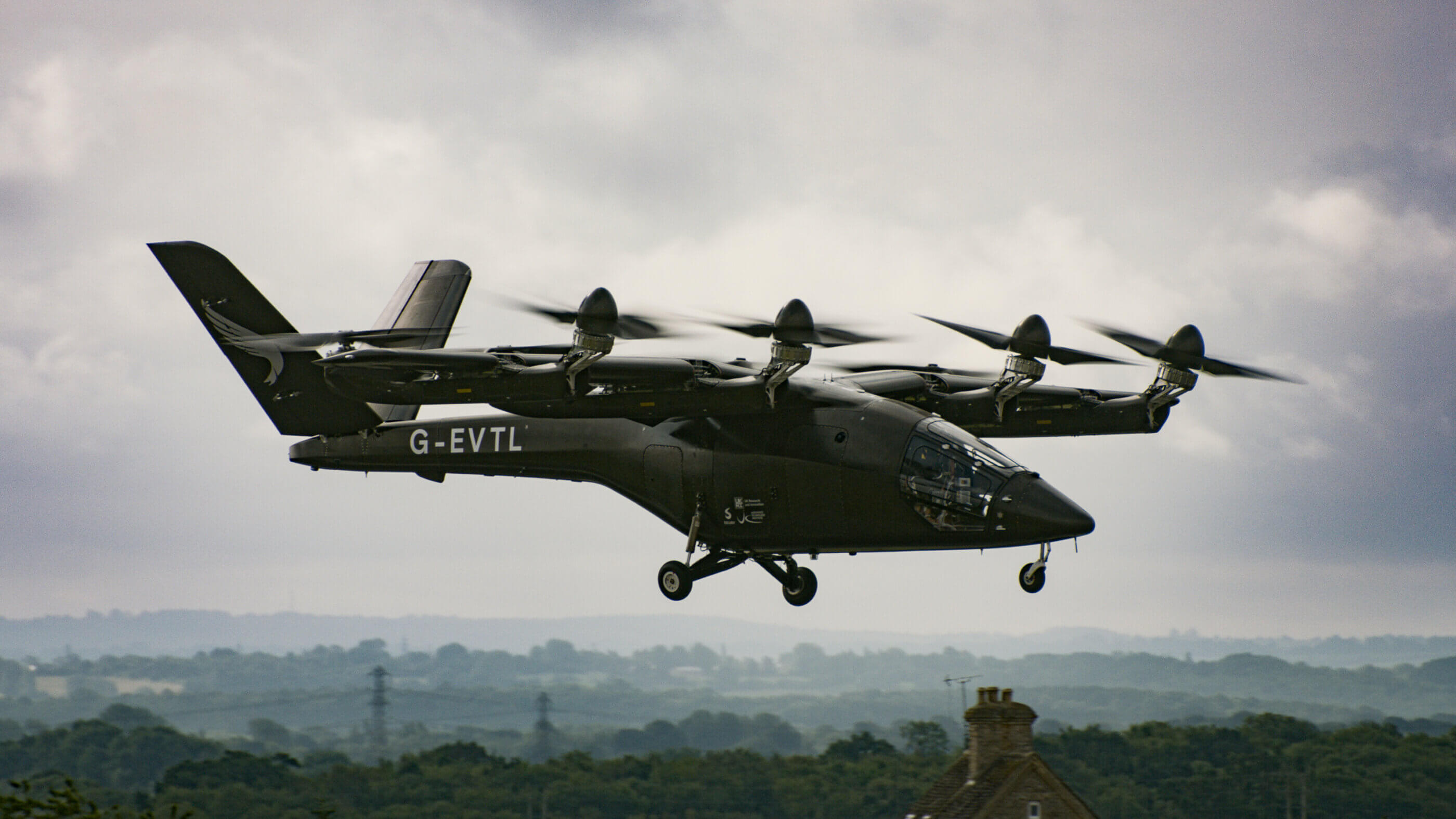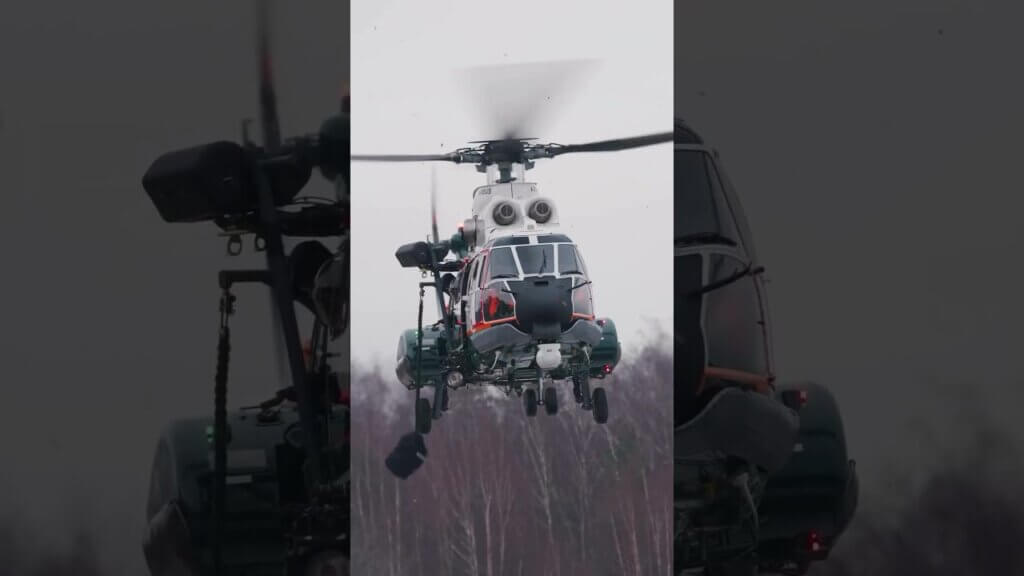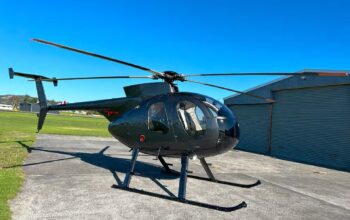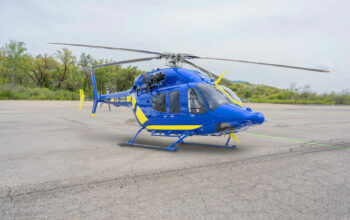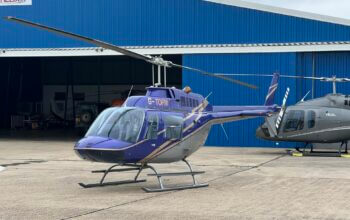
Vertical Aerospace, a global aerospace and technology company that is pioneering zero-emissions aviation, has provided an update on its overall program.
Vertical Aerospace concluded its remote thrustborne flight test campaign in July 2023, as the first full-scale VX4 prototype reached its target speed of 40 knots (70 kilometers per hour), demonstrating exceptional overall stability and control.
Performance targets were generally exceeded by 10 to 30 percent during hover and low speed flights. The prototype performed especially well in sustained hover, typically the most challenging regime for a vertical take-off and landing (VTOL) aircraft, where it maintained level flight for longer than anticipated.
The aim of these thrustborne flight tests was to verify acceptable stability, battery efficiency and control characteristics, aerodynamics, structural loads, performance and vibration throughout this speed range — all of which were achieved.
Incident update
Vertical Aerospace continued further uncrewed flight tests following the completion of the remote thrustborne flight test campaign. The purpose of these was to understand how the aircraft performed outside of its expected operating conditions before the aircraft’s planned retirement.
During one of these test flights, an unexpected fault occurred causing the aircraft to enter a stable descent, before being damaged on impact with the ground. Vertical Aerospace said it completed a swift and thorough investigation and submitted a report to the Air Accidents Investigation Branch (AAIB).
Vertical Aerospace’s investigation identified the root cause to be a fault with a propeller. This early generation propeller had already been redesigned prior to the incident, with the issue fully resolved ahead of the next phase of testing.
Further recommendations by the investigation are being implemented by Vertical Aerospace, the company said.
Vertical Aerospace said it believes transparency and openness is fundamental to the safety of aerospace. It therefore intends to provide a further full update to the industry on the incident once the AAIB’s investigation has concluded.
VX4 program update
Supported by the learnings from the completed thrustborne campaign, the VX4 and its certification program remains on track with no changes to timelines. The assembly of a second significantly more advanced full-scale VX4 prototype is underway at GKN Aerospace’s Global Technology Centre.
This demonstrator is expected to be ready to fly early next year. Its components will include technology from most of Vertical Aerospace’s certification partners: Honeywell, GKN Aerospace, Hanwha, Solvay, Leonardo and Molicel.
An additional, identical full-scale aircraft has also now been approved and is expected to be flying in the second half of 2024. These upgraded full-scale aircrafts’ structures and subsystems will be tested in line with certification standards.
Both will require rigorous regulatory oversight, including a permit to fly from the U.K. Civil Aviation Authority, to progress to piloted flying.
Stephen Fitzpatrick, Vertical Aerosace founder and CEO, said: “We are pleased with our flight test progress to date and the data, insights and invaluable learnings we have collected. While a fault of any sort is disappointing, it is not wholly unexpected at this stage of testing a novel aircraft.
“I am pleased that as a result of our expert team we have isolated the cause of the fault and been able to provide the AAIB with our report within 14 days of the incident. Our planned second upgraded prototype, which will include most of our top tier partners’ technology, will have us in the air early next year and we remain on track for our certification timelines”.
• Vertical Aerospace continues to be funded into H2 2024.
• During an additional flight test on Aug. 9, when one of the aircraft’s electrical propulsion units (EPUs) had been intentionally disabled, one of the front propellers connected to a separate EPU was released. This resulted in an excessive out of balance load, which caused the failure of one of the supporting pylon structures. The aircraft entered a stable descent due to loss of thrust, suffering damage on contact with the ground.
• Core proprietary technology unique to Vertical Aerospace’s aircraft, including the high voltage and battery systems, performed well during the incident.
• Voltage, current and power all stayed within acceptable limits and cell temperatures were considered normal during and after the incident.
• Vertical Aerospace’s investigation identified the root cause to be a bonding issue within the propeller blade itself. This Generation 1 propeller design will not feature on any future VX4 prototype – prior to the incident, it had already been redesigned and manufactured with a different process.
• The aircraft involved in the incident will be used in further ground tests but will not be repaired to an airworthy standard.
This press release was prepared and distributed by Vertical Aerospace.





